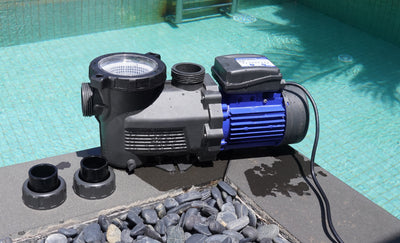Can You Use Bleach in a Pool to Keep It Clean?
When it comes to pool maintenance, many homeowners struggle with the high cost of specialized pool chemicals. However, there’s a simple, cost-effective alternative for keeping your pool clean and sanitized—common household products. Among these, bleach (or liquid chlorine) can be an excellent substitute for traditional chlorine tablets, helping you save money without sacrificing cleanliness.
In this blog post, we’ll show you how to use bleach, along with other easily accessible household items, to maintain your pool efficiently and affordably. Read on to learn how you can replace expensive pool chemicals with items you can find at your local grocery store.
Key Pool Chemicals to Maintain
When managing your pool’s water chemistry, there are four primary levels to monitor:
- Chlorine: Essential for sanitizing the water and killing bacteria and algae.
- pH: Maintains the water’s balance, preventing it from being too acidic or basic.
- Alkalinity: Helps keep pH stable.
- Cyanuric Acid (CYA): Protects chlorine from being broken down by the sun's UV rays.
To keep your pool in optimal condition, you should test your water regularly, usually once a week. For the best results, adjust the chemical levels in the following order: Alkalinity, then pH, and finally Chlorine.
Household Substitutes for Pool Chemicals
1. Baking Soda to Raise Alkalinity
Baking soda is a great alternative to expensive alkalinity increasers. It contains sodium bicarbonate, which raises your pool’s alkalinity. For every 10,000 gallons of water, add about 1.5 pounds of baking soda to raise your alkalinity by 10 parts per million (PPM). This will also slightly raise your pH, making it a great two-in-one solution.
2. Soda Ash to Adjust pH
Soda ash, also known as washing soda, is another budget-friendly pool chemical substitute. It helps raise the pH of your pool water. For every 10,000 gallons, use about half a pound of soda ash to raise your pH by 0.2. If your pH is below 7.0, start with 1 pound per 10,000 gallons.
3. Muriatic Acid to Lower pH
Muriatic acid is an effective solution for lowering both pH and alkalinity levels in your pool water. This product can replace commercial pH decreasers and dry acid. It’s important to handle muriatic acid carefully by wearing the right safety gear. To lower the pH by 0.2 for every 10,000 gallons of water, add around 2 cups of muriatic acid.
4. Bleach or Liquid Chlorine to Sanitize Water
While it might seem surprising, you can use bleach or liquid chlorine as an affordable alternative to chlorine tablets or granules. Both bleach and liquid chlorine contain sodium hypochlorite, the active ingredient needed to sanitize your pool.
Liquid chlorine is more concentrated (around 10-12%), while bleach from the grocery store usually contains 7-8%. If you're using bleach, you'll need about double the dose compared to liquid chlorine. For regular maintenance, add about 1 gallon of liquid chlorine for every 10,000 gallons of pool water.
How to Add Bleach or Liquid Chlorine Safely
To prevent damage to your pool’s surfaces, pour the bleach or liquid chlorine around the perimeter of the pool while the pump and filter are running. This helps distribute the chemical evenly throughout the water. Be sure to test your chlorine levels regularly, especially if you're using bleach, as it is less stabilized and may degrade more quickly in sunlight.
What About Saltwater Pools?
If you have a saltwater pool, you generally won’t need to worry about adding chlorine manually. As long as your saltwater generator is functioning correctly, it will continuously produce chlorine for you. However, if you need to shock your pool or are dealing with algae or cloudy water, adding bleach or liquid chlorine can help.
Other Pool Care Tips
- Chlorine Stabilizer (Cyanuric Acid): If you’re using bleach or liquid chlorine, you may need to add chlorine stabilizer to protect your chlorine from sunlight. Cyanuric acid helps your chlorine last longer in direct sunlight, keeping your pool water sanitized.
- Calcium Hardness Increaser: If your pool water has low calcium levels, it can cause corrosion in your pool’s equipment. If calcium hardness is too high, you may see scaling or buildup. Adding a calcium hardness increaser will help balance the levels.
The Importance of Regular Pool Maintenance
While adding the right chemicals is essential, don’t forget about your pool’s overall cleanliness. Make sure to clean your filter, skim the surface regularly, and brush the walls to avoid buildup. Proper maintenance of both your pool's chemistry and its cleanliness will keep the water sparkling and inviting.
Conclusion
Maintaining a clean, safe, and balanced pool doesn't have to break the bank. By using everyday household products like bleach, baking soda, and soda ash, you can easily maintain your pool’s water chemistry without resorting to expensive pool store chemicals. Just be sure to test your water regularly and add the correct amount of these products to keep everything in balance.
For more pool care tips and expert advice, check out the AQUASTRONG blog, and ensure your pool remains in top shape all season long.

